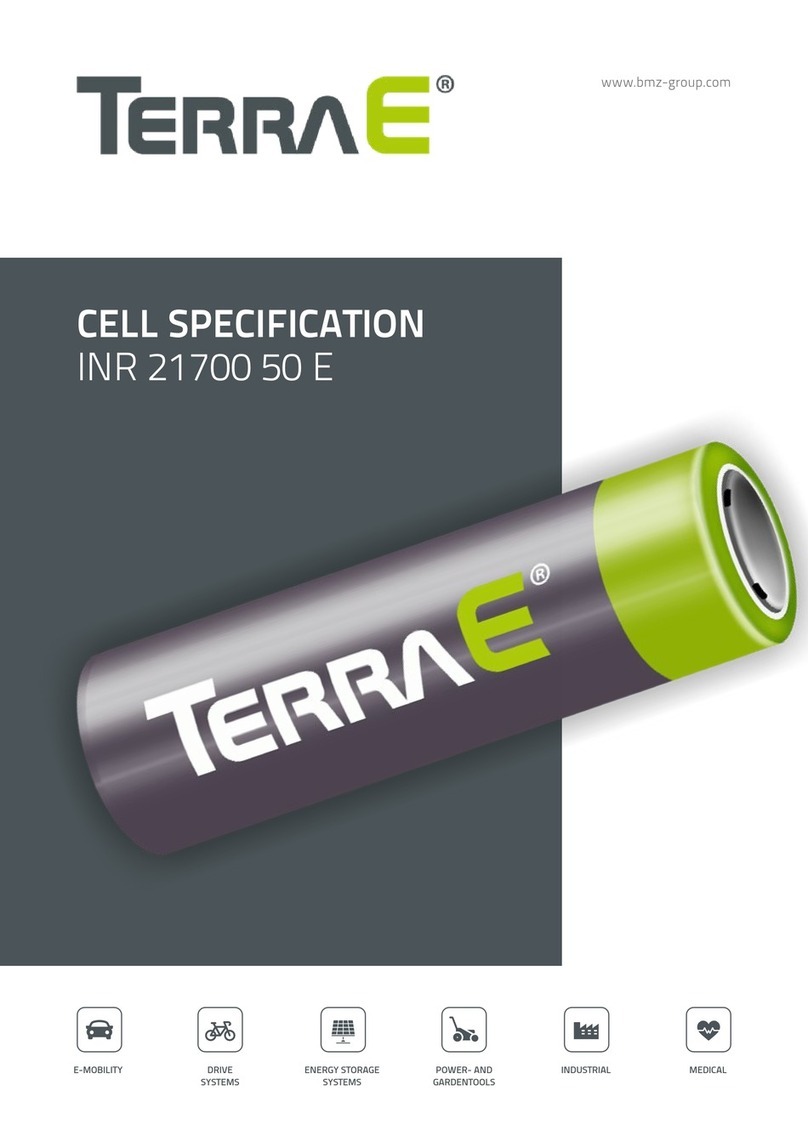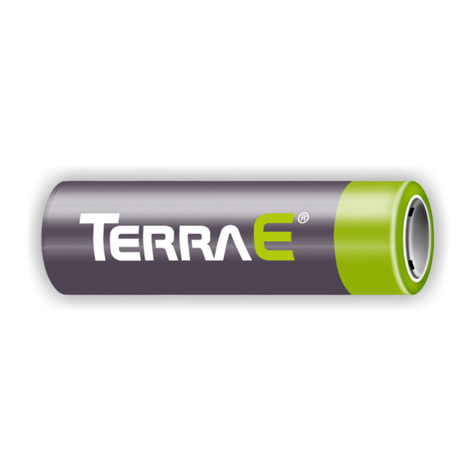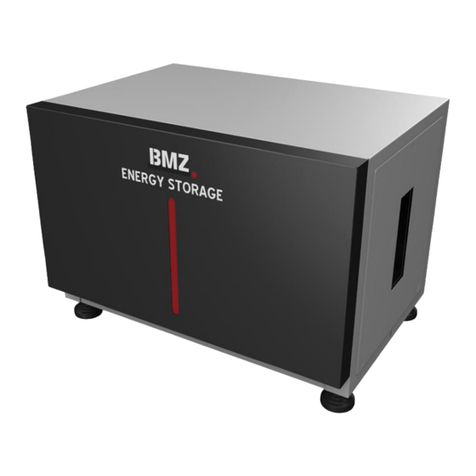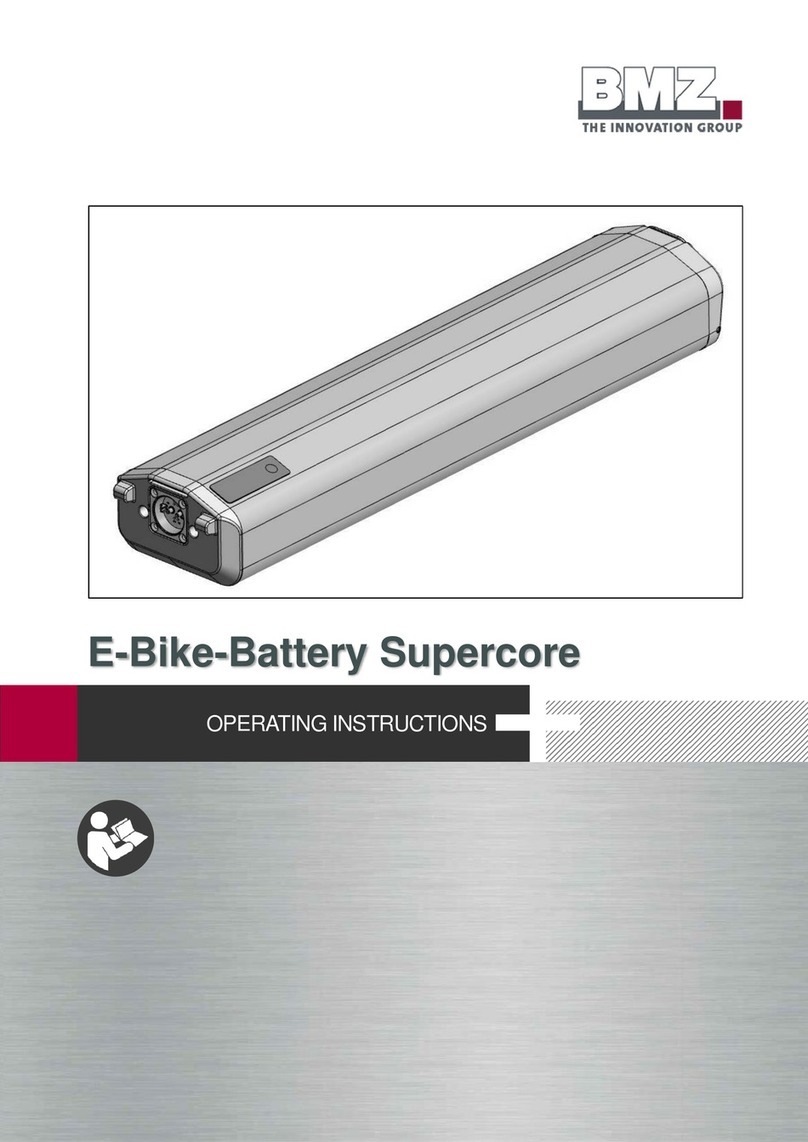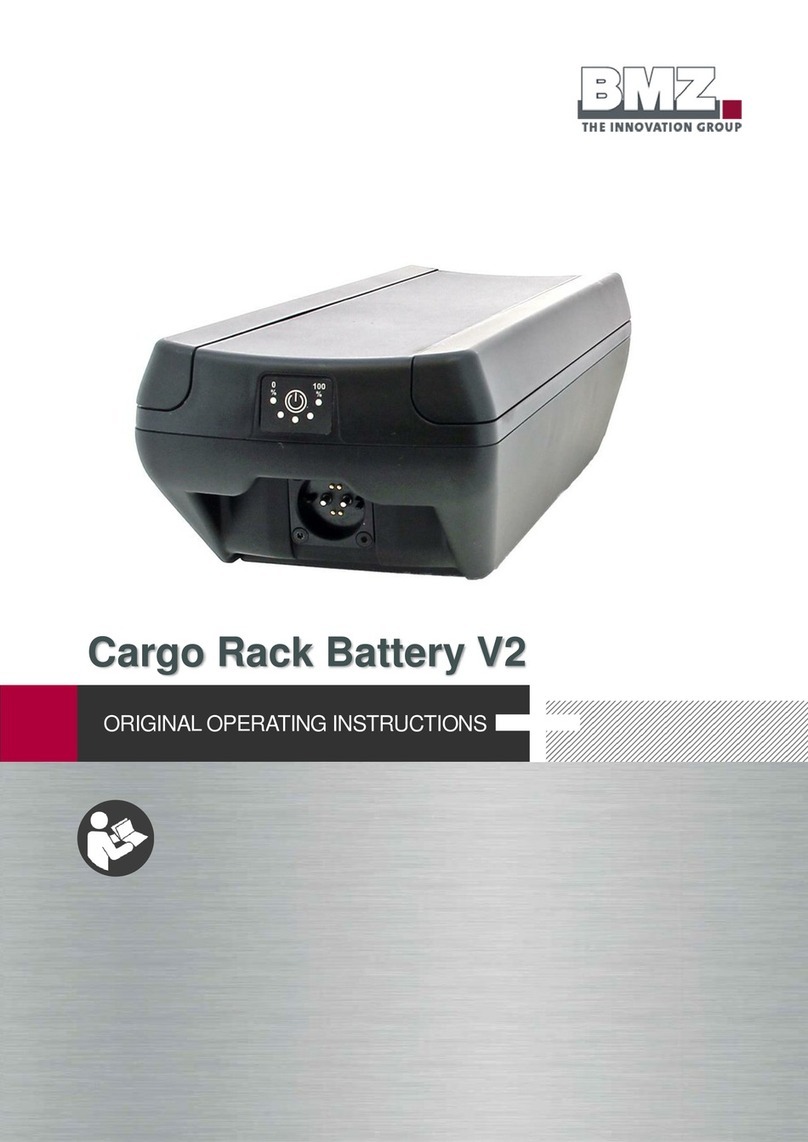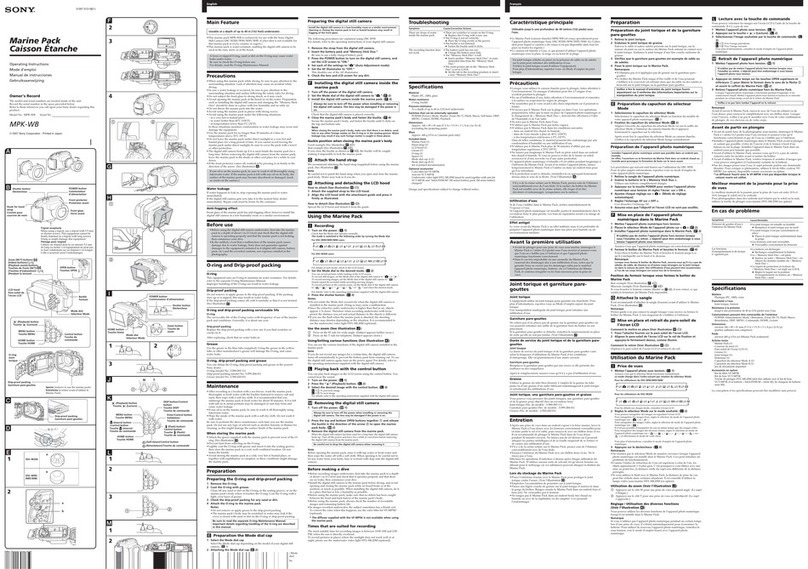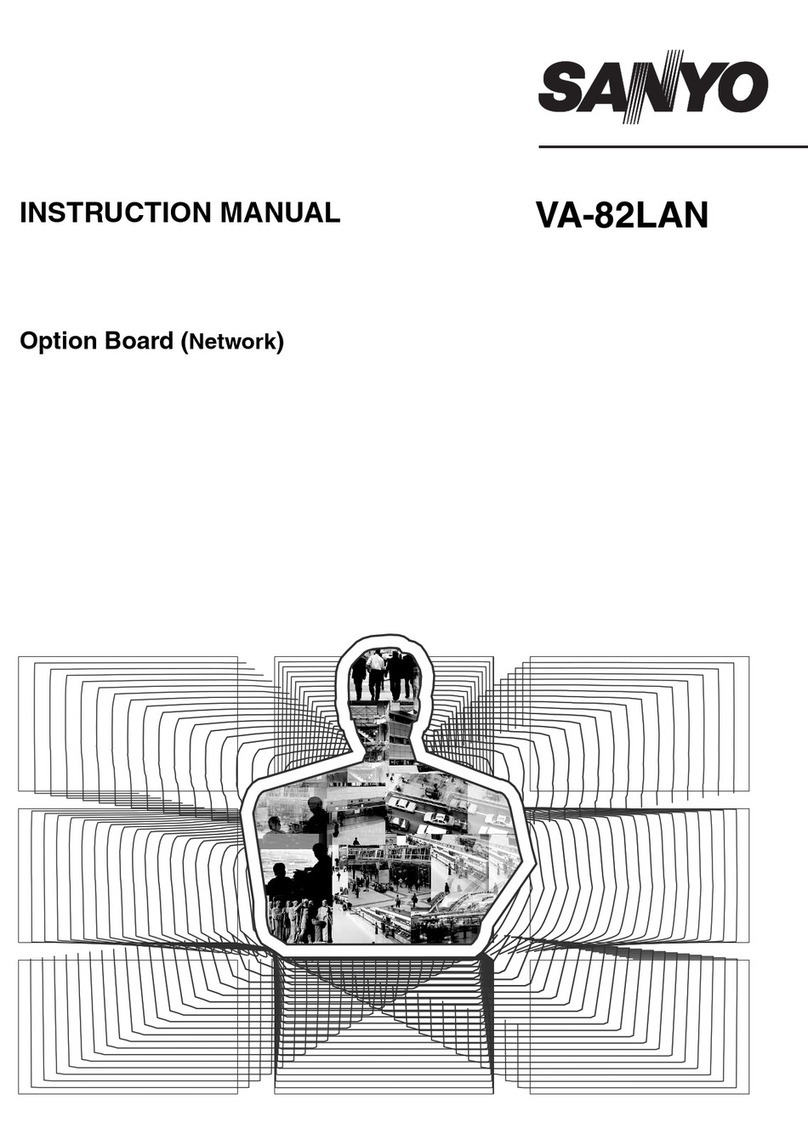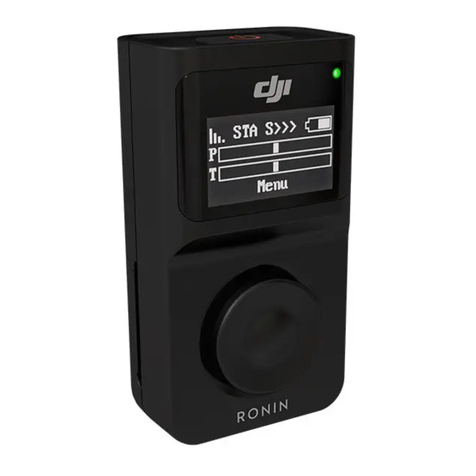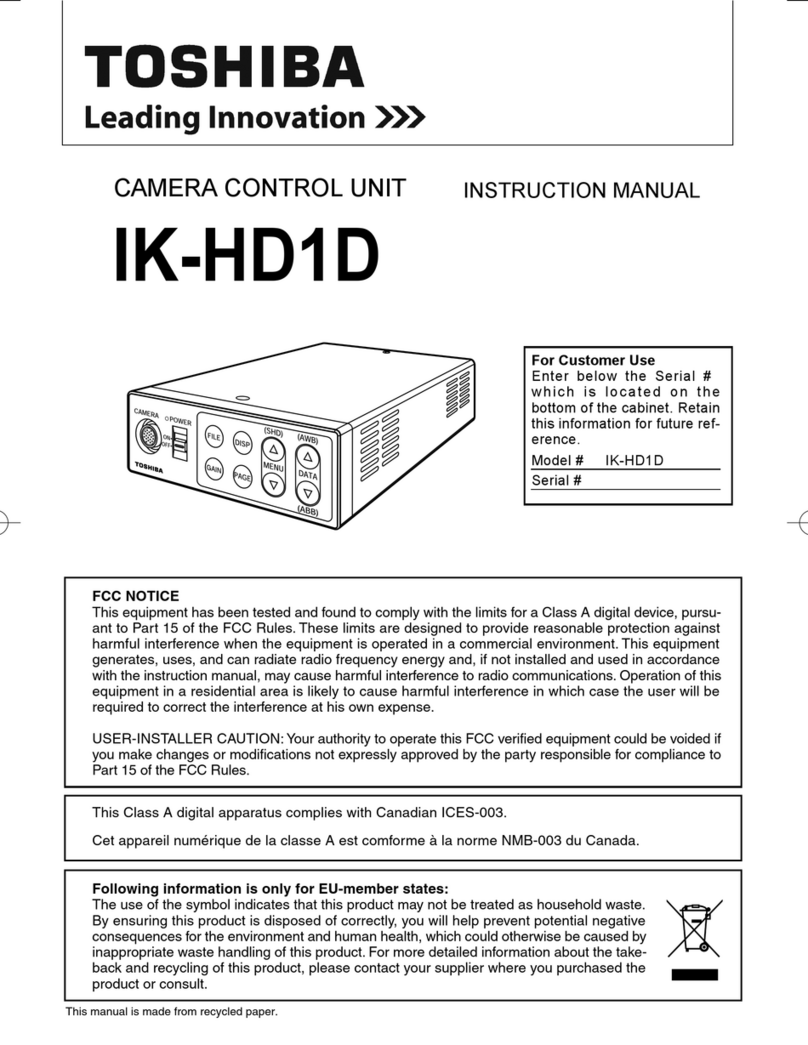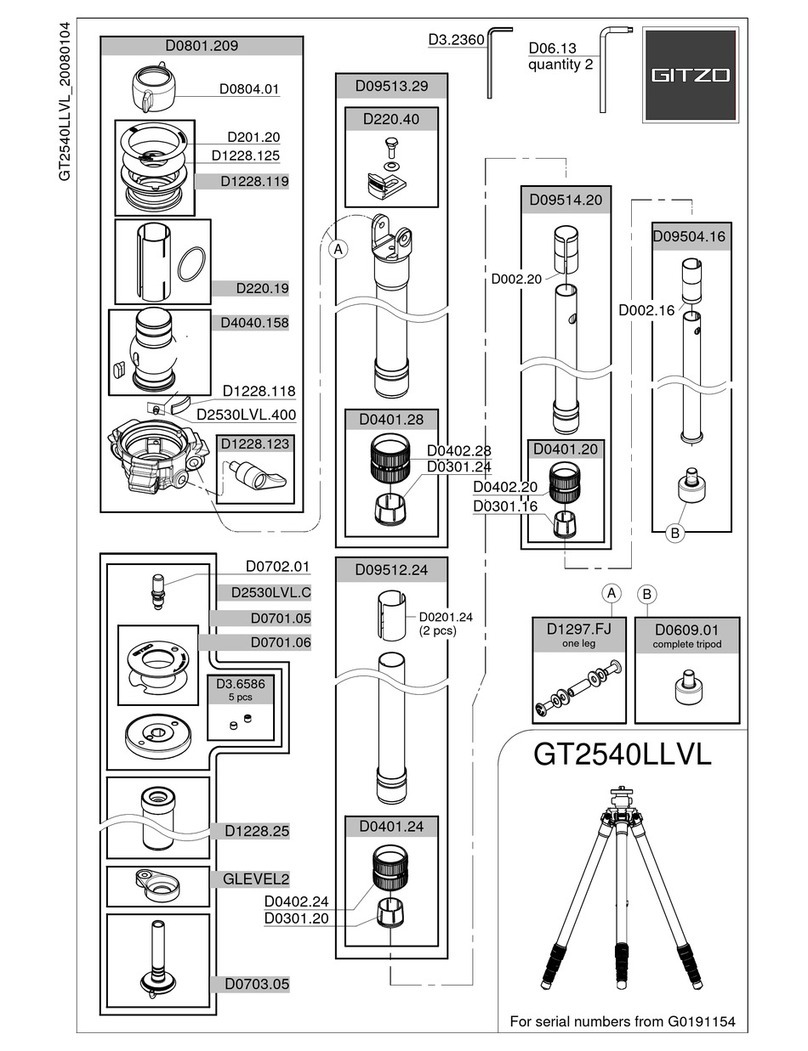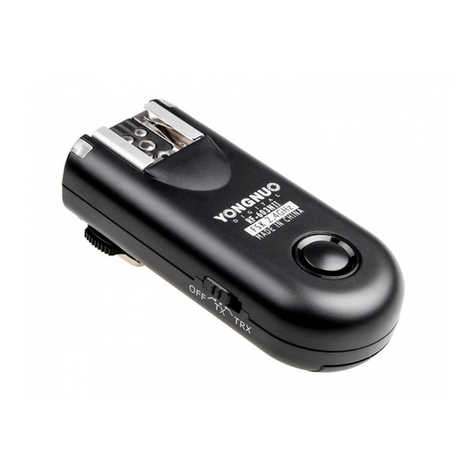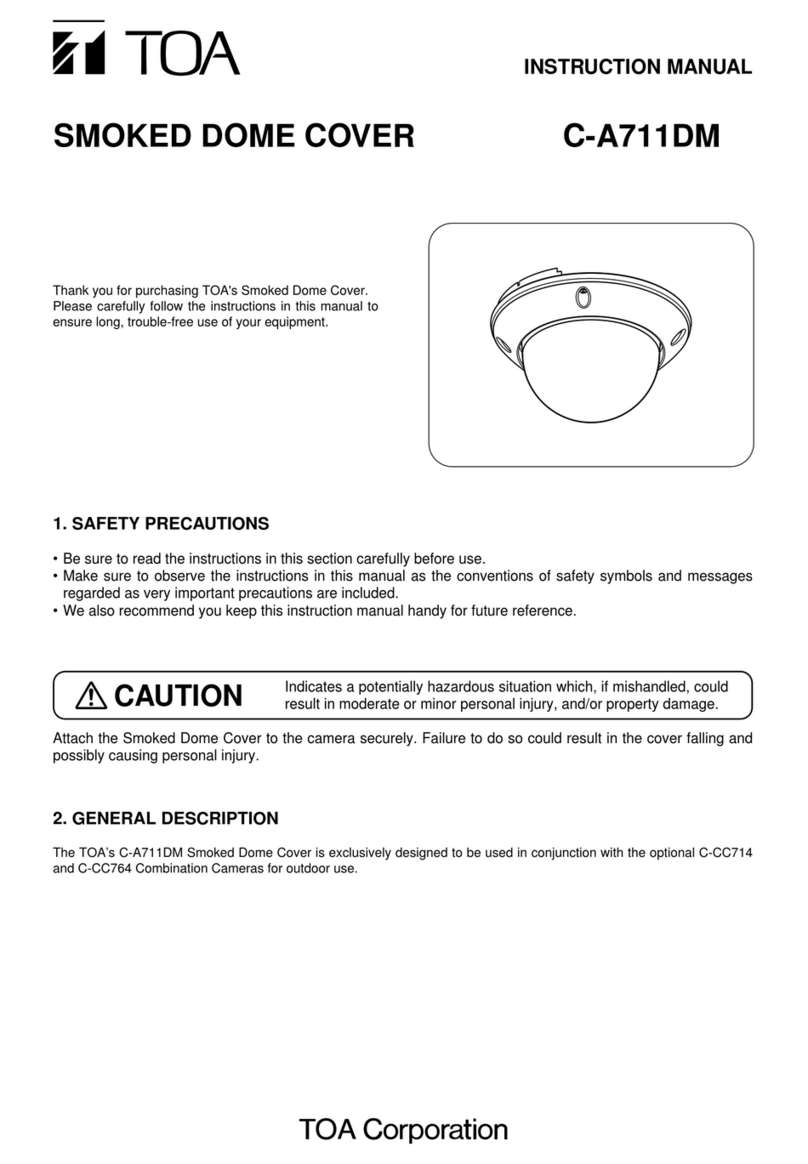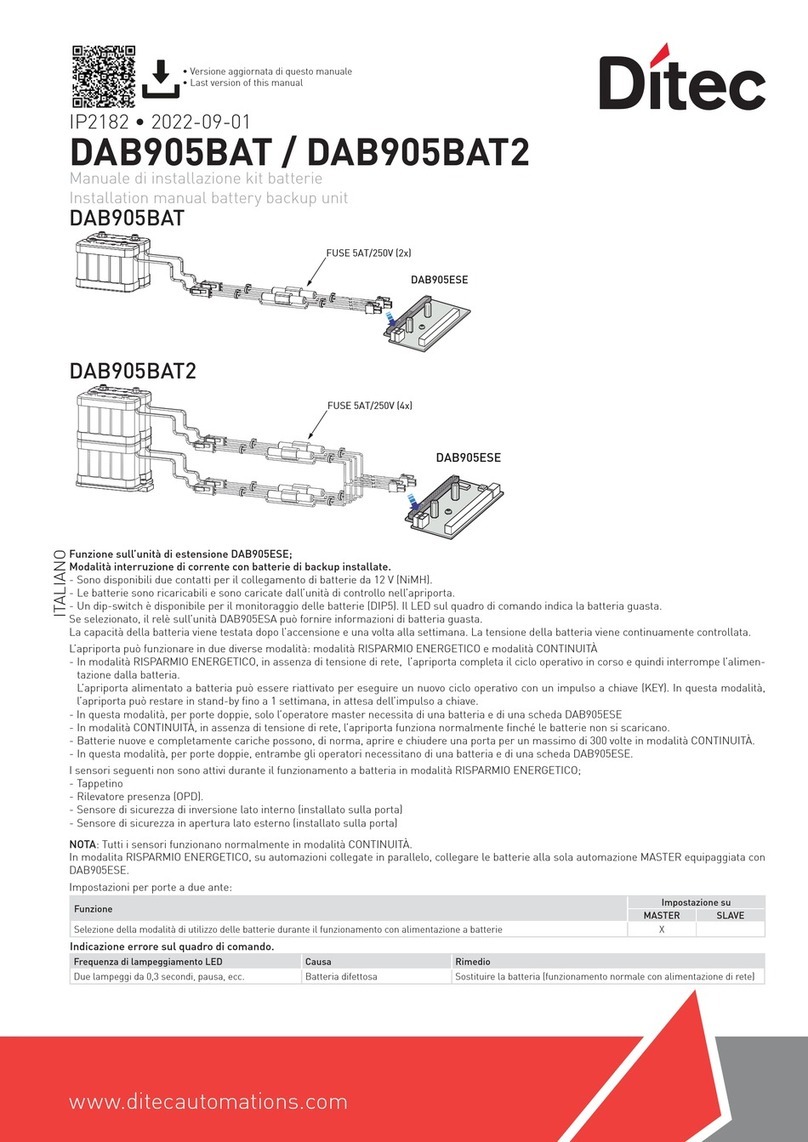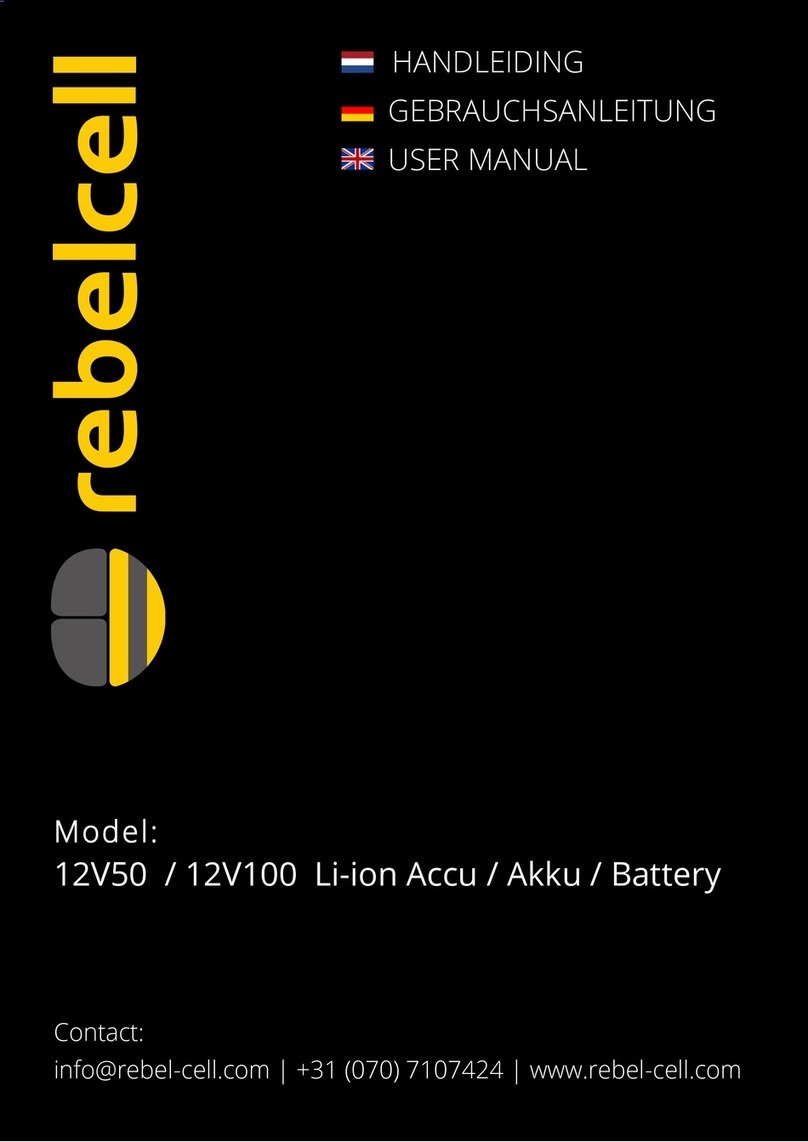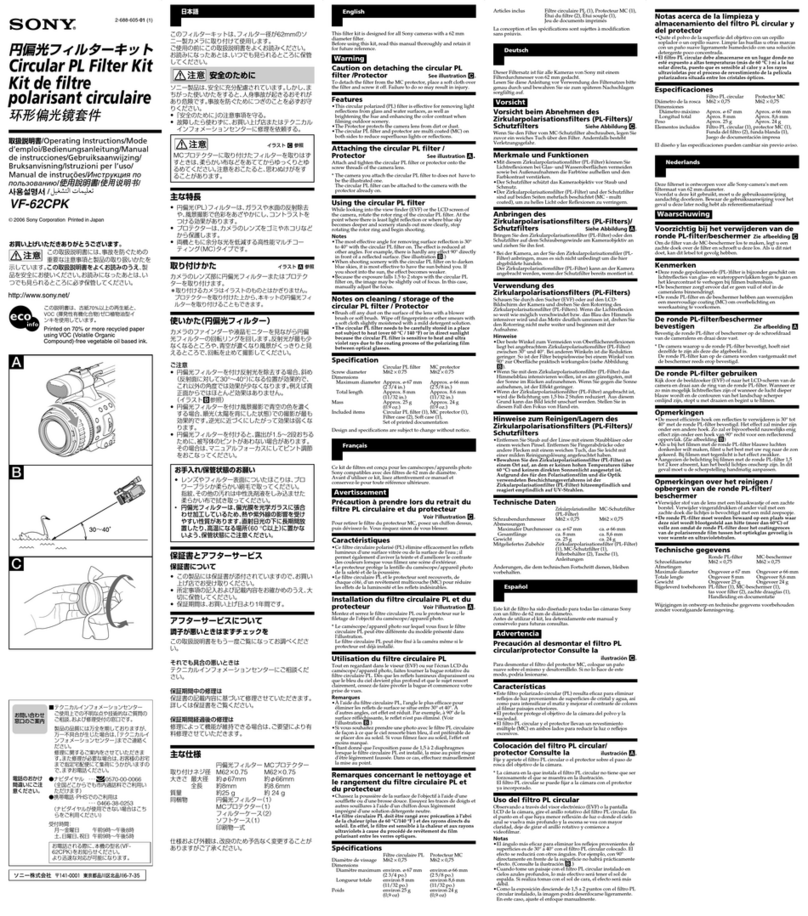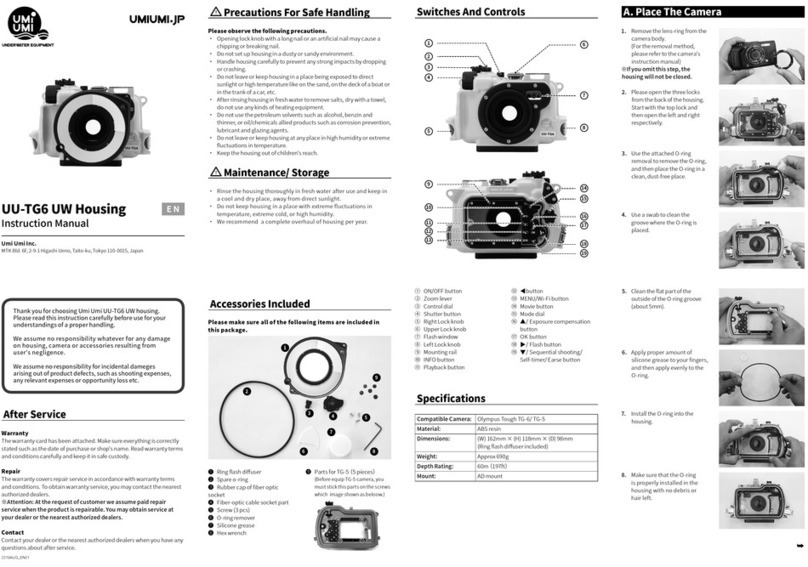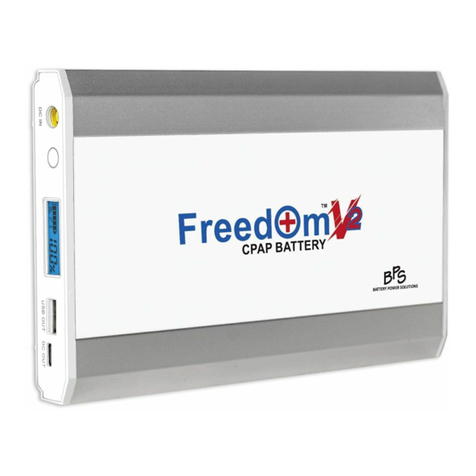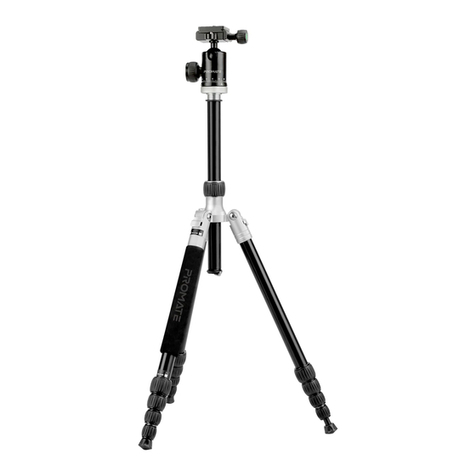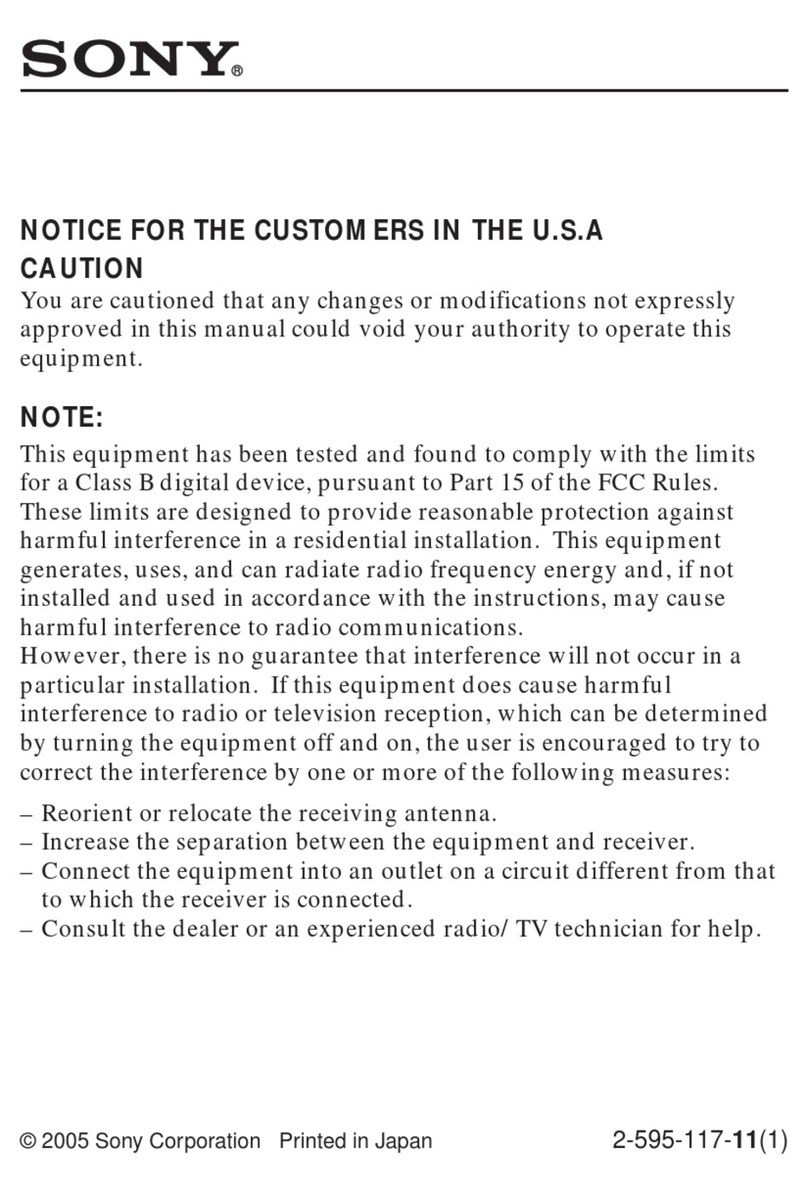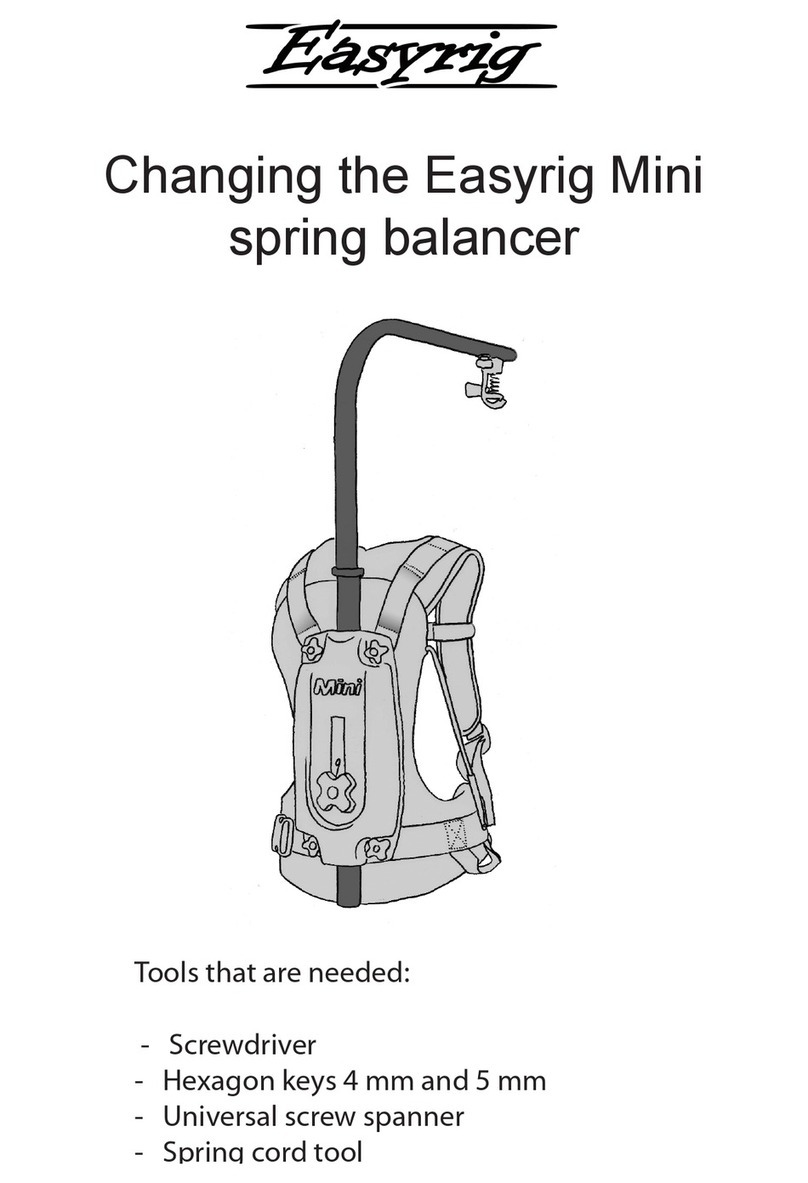BMZ ESS1.0 User manual

Energy Storage System ESS1.0 Manual
Dear customer,
We appreciate your interest in our new Li-Ion storage system. ESS1.0 battery has integrated
advanced battery management system, which allows wide range of battery usage.
It gives you protection against overcurrent, short-circuit, excessing load or total discharge.
Cell balancing system makes sure that state of charge of single cells will remain on same
level and thus improves their lifetime.
As our battery was designed and produced with safety requirements, also fully tested before
delivery, it is one of the most safe and fully customer-friendly battery on storage system
market today.
To improve your safety, please take your time to read this manual. It will allow you to use
the battery correctly and improve its lifetime.
We will be delighted of any of your suggestions, which help to keep quality and improve our
products. We hope you’ll enjoy ESS1.0 battery.
Your BMZ Poland team.

Energy Storage System ESS1.0 Manual
Contents
1. Important operation and safety instruction.................................................................................. 5
2. Technical data ................................................................................................................................. 7
2.1. Technical characteristics......................................................................................................... 7
2.2. Battery tests and approvals ................................................................................................... 8
2.3. Safety....................................................................................................................................... 8
2.4. Communication and information system .............................................................................. 8
2.5. Modularity .............................................................................................................................. 9
3. Equipment....................................................................................................................................... 9
3.1. Delivered parts........................................................................................................................ 9
3.2. Main operating elements and components ........................................................................ 10
4. Startup and parallel connection................................................................................................... 11
4.1. Startup with individual batteries ......................................................................................... 11
4.2. Startup with battery banks................................................................................................... 11
4.3. Battery wake-up ................................................................................................................... 12
4.4. Parallel connections.............................................................................................................. 13
5. Charging ........................................................................................................................................ 14
5.1. Charging single Battery......................................................................................................... 14
5.2. Charging battery bank .......................................................................................................... 15
6. Maintenance and Storage ............................................................................................................ 15
6.1. Storage time chart ................................................................................................................ 16
7. Decommissioning / disposal......................................................................................................... 16
8. Warranty conditions..................................................................................................................... 17

Energy Storage System ESS1.0 Manual
1. Important operation and safety instruction
Battery was designed to work safely and dependably as long as it is used in accordance with
all instructions in this manual. We advise you to read this manual carefully before starting
using the battery. Any non-compliance with instructions may cause even property damage
and/or user injury. No liability is assumed by BMZ Poland for any damage caused when
battery is not used according to this manual.
To safely operate the battery:
Only instructed operators should use the battery
Suitable cable cross-sections for connecting should be used
Avoid hand contact with terminals
In situation of connecting more batteries:
oWhen connected in parallel battery bank, be sure that every single battery
has the same capacity, state of charge and age. Additionally before
interconnection all batteries should be fully charged
oIt is recommended to have interconnection between batteries performed by
specialized staff
Absolutely do not wear any metallic jewelry, use only insulated tools when staying or
working on batteries
Avoid exposing battery to long-term moisture or water (even though it meets IP 67
protection class)
Do not open battery housing to avoid warranty lost and possible body injury. If you
notice any mechanical damage of housing:
oStop using the battery and contact with BMZ Poland
ESS1.0 battery should be mounted in horizontal position and protected against any
movement while working
Keep it away from fire
Charge battery only on a non-flammable surface at ambient temperatures of
between 0°C and 55°C
Battery is declared as dangerous goods (according to UN Class 9). In this case it
should be transported only in original packaging
• This symbol informs about possible risks of injury to users.

Energy Storage System ESS1.0 Manual
Below, please find the most important instructions for operation of ESS1.0 battery. Beside
these, please also work in accordance with manual to prevent any body injury or damage to
the battery.
Use only equipment which draws less than 180A from single battery. In situation
when batteries are connected in parallel you may draw multiple value of 180A (i.e.
360A for two connected in parallel)
Ensure correct polarity while connecting equipment or chargers
To extend battery lifetime avoid exposing battery to the sun and high ambient
temperatures
Be sure that battery is charged between 20-40% when stored for a longer period.
Additionally, regularly check and sure that battery voltage is higher than 21V
Battery storage temperature (ideal) is between 5° and 15°C
• This symbol informs about possible risks of damage caused to or injuries
caused by the battery.

Energy Storage System ESS1.0 Manual
2. Technical data
2.1. Technical characteristics
General characteristics
Nominal energy (kWh)
2,7
Nominal voltage (V)
25,2
Final charging voltage (V)
29
Final discharging voltage (V)
23,5
Maximum capacity (Ah)
108
Maximum discharge rate (A)
180
Maximum discharge power (W)
4500
Weight (kg)
24,3
Dimensions (mm)
577,5 x 218,5 x 253,5
Volume (L)
32
Battery chemistry
Li-Ion NMC
Battery composition
Number of cells
336
Cell housing
Steel cylinder safety cell
Capacity per cell (Ah)
2.25
Nominal voltage per cell (V)
3.6
Cell connection
7S-48P
Performance data
Energy density (Weight)
110,5 Wh/kg
Energy density (Volume)
84 Wh/l
Power density (Weight)
180 W/kg
Power density (Volume)
141 W/l
Lifetime data
Cycle lifetime
4000 cycles* or 5years
Average capacity loss per year
Ca. 4% at 25 °C ambient temperature
Additional information
Cell operating temperature
-20° to +60 °C
Cell charging temperature
0° to +55 °C
Storage temperature
-30° to +55 °C (10° to 25°C
recommended)
Protection class
IP 67
* Estimated cycles number with 40Amps charge/discharge

Energy Storage System ESS1.0 Manual
2.2. Battery tests and approvals
UN 3480: In general, a certificate of a passed test according to UN Manual “Test and
Criteria” Part III, 38.3. is required for transportation of lithium batteries/cells. ESS1.0 battery
has passed all tests required for admission.
Test
Passed
Test 1: Altitude Simulation
Yes
Test 2: Thermal Test
Yes
Test 3: Vibration
Yes
Test 4: Shock
Yes
Test 5: External Short Circuit
Yes
Test 6: Impact
Yes
Test 7: Overcharge
Yes
Test 8: Forced Discharge
Yes
2.3. Safety
Battery-Management-System und Safety
Implemented
Switch on / off
Yes
Cell-Balancing
Yes
High current protection
Yes
Short-circuit protection
Yes
Deep discharge protection
Yes
Protection against false charge
Yes
Protection against reverse polarity
Yes
Single cell monitoring
Yes
Current interrupt device (CID) for each cell
Yes
Safety valve in each cell
Yes
Cell temperature monitoring
Yes
Board temperature monitoring
Yes
2.4. Communication and information system
Data Interface
Interface
RS485
Optional interface
CANopen
Electronic battery identification
Yes
Data recording (error log)
Yes

Energy Storage System ESS1.0 Manual
2.5. Modularity
You can connect up to 16 batteries in parallel to receive higher capacity and currents:
Parallel connection
1
2
3
4
5
6
Maximum Capacity
(Ah)
108
216
324
432
540
648
Nominal voltage (V)
25,2
Maximum discharge
rate (A)
180
360
540
720
900
1080
Energy (kWh)
2,7
5,4
8,1
10,8
13,5
16,2
Weight (kg)
28
56
84
112
140
168
3. Equipment
3.1. Delivered parts
The ESS1.0 Battery pack includes the following parts:
Battery
2x M12 nuts with 2x washers
Communication cable
Operating manual
Packaging

Energy Storage System ESS1.0 Manual
3.2. Main operating elements and components
Negative and positive terminals are identical, internally connected and have the same
functionality and available as both clamping and screw connections. By hydrophobic
membrane ventilation prevents against any pressure excess in housing.
• During handling and cleaning make sure you do not damage ventilation.
• Do not cover ventilation.
Data ports
Handle
Positive terminals
Negative terminals
Water sensor
Safety Vent
ID Label

Energy Storage System ESS1.0 Manual
4. Startup and parallel connection
4.1. Startup with individual batteries
4.2. Startup with battery banks
•Avoid contacting terminals with unsecured hands.
• ESS1.0 battery should be mounted in horizontal position and protected
against any movement while working
• Absolutely do not wear any metallic jewelry, use only insulated tools
when staying or working on batteries.
• Suitable cable cross-sections for connecting should be used
• Prior to connection, proceed to cleaning of all contacts
• All of the equipment must be switched off during installation
• When connecting any equipment to ESS1.0, make sure that only
appropriate cable lugs or eyelets are used
• Be sure that all connections are firmly tightened
• Mind polarity when connecting equipment and chargers. Description of
terminals (positive and negative) is placed on enclosure of the battery
• Always connect first positive, then negative cable
• ESS1.0 battery should be mounted in horizontal position and protected
against any movement while working
• Do not place anything on the battery
• Do not disregard any safety installation instructions of individual
batteries (chapter 4.1).
• All batteries connected in parallel must have same capacity, age and
state of charge and must be fully charged (separately) before their
interconnection.
Any differences in state of charge may induce extremely high
compensating currents overcharging cables and connectors or battery
itself. In worst case even fire or injury may be the result.

Energy Storage System ESS1.0 Manual
4.3. Battery wake-up
As batteries are supplied in sleep mode, it needs to be
woken-up before any usage.
If you want to wake-up single battery, battery minus
terminal should be connected with Pin 5 of communication
port for >3 sec. It is shown in figure:
If you want to wake-up battery bank, connect all minus terminals and then follow
instructions for single battery.

Energy Storage System ESS1.0 Manual
4.4. Parallel connections
In parallel connection ESS1.0 Batteries must have respectively connected positive and
negative poles to each other. Below figure shows parallel connection of few batteries. In this
way, up to 16 batteries may be interconnected in parallel.
• Remember never interconnect more than 16 batteries in parallel.

Energy Storage System ESS1.0 Manual
5. Charging
5.1. Charging single Battery
The following drawing shows the connection of a charging unit (charge controller or charger)
to the single battery.
• All of the equipment must be switched off during installation
• Avoid contact between plus and minus eyelets
• Check correct polarity of a charger
• Do not use any chargers for lead-gel or AGM batteries.
• Charge battery only on a non-flammable surface at ambient
temperatures of between 0°C and 55°C
• Do not connect solar panels directly to ESS1.0 battery
• If you would like to charge ESS1.0 with solar panels, an AC-DC converter
converting energy to standard line voltage have to be used
• In case you are unsuccessful with recharging a totally discharged
battery, contact BMZ POLAND

Energy Storage System ESS1.0 Manual
5.2. Charging battery bank
6. Maintenance and Storage
To clean the battery, use any customary cleaning agent suitable for synthetics. Apply contact
oil to pole terminals.
No matter how frequently the battery will have been used, check tightness, cell state,
system safety and content of error memory at least every two years.
• Be sure that battery is charged between 20-40% when stored for a
longer period. Additionally, regularly check and sure that battery voltage
is higher than 21V
• Even though the battery is protected against total discharge, it will lose
energy during storage. When discharged to less than 14V, battery will
irreversibly be damaged. Chart shows you how to define your battery
checking intervals –additionally remember that voltage mostly depends
on respective storage temperature and operating conditions.
• Battery storage temperature (ideal) is between 5° and 15°C
• During handling and cleaning make sure not to damage ventilation
system.
• In case battery was switched off, remember to switch it on again with
instructions in this manual.

Energy Storage System ESS1.0 Manual
6.1. Storage time chart
7. Decommissioning / disposal
The ESS1.0 Storage battery meets the provisions of Directive 2002/96/EC.
The mentioned directive rules the dismissal of electric and electronic
equipment for sustainable protection of the environment. Depending on
local requirements you may dispose of your battery at a municipal
collecting point for proper disposal.
Table of contents
Other BMZ Camera Accessories manuals




